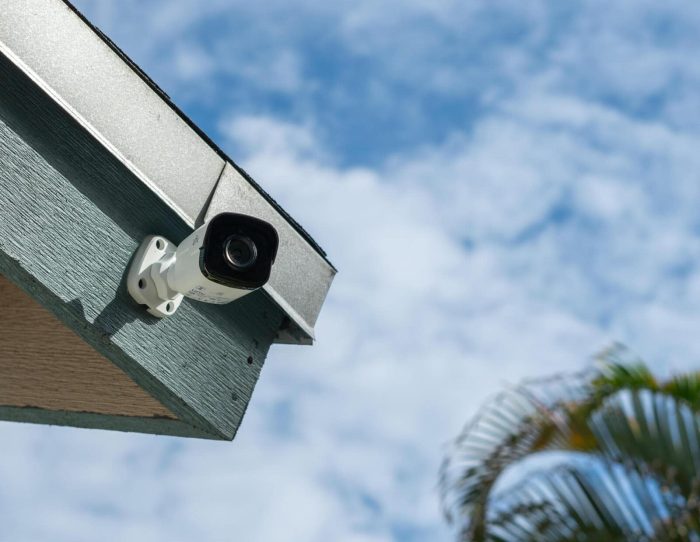Exploring the process of painting metal siding on a house opens up a world of possibilities for homeowners looking to refresh their exterior. From preparation to application techniques, this guide covers all the essential steps to achieve a flawless finish that stands the test of time.
As we delve deeper into the nuances of painting metal siding, you'll discover valuable insights and expert tips to elevate your home's curb appeal effortlessly.
Preparation
Before painting metal siding on a house, it is crucial to gather the necessary tools and materials, clean the siding thoroughly, and properly prepare the surface for painting.
Necessary Tools and Materials
- Pressure washer or hose
- Mild detergent or cleaning solution
- Scrub brush or sponge
- Primer suitable for metal surfaces
- Exterior metal paint
- Paint roller or sprayer
- Paintbrush
- Painter's tape
- Drop cloths or plastic sheeting
- Sandpaper or sanding block
- Protective gear (gloves, goggles, mask)
Cleaning the Siding
Before starting the painting process, cleaning the metal siding is essential to ensure proper adhesion of the paint. Use a pressure washer or hose to remove dirt, debris, and any loose paint. Scrub the surface with a mild detergent or cleaning solution to eliminate any grime or grease that could affect the paint's durability.
Properly Preparing the Surface
Proper surface preparation is key to a successful paint job.
Begin by allowing the siding to dry completely after cleaning. Next, sand any rough areas or flaking paint to create a smooth surface. Apply a coat of primer specifically designed for metal surfaces to enhance paint adhesion and durability. Finally, you are ready to apply the exterior metal paint for a fresh and long-lasting finish.
Choosing the Right Paint
When it comes to painting metal siding on a house, selecting the right type of paint is crucial for a long-lasting and durable finish.
Types of Paint Suitable for Metal Siding
- Oil-based Paint: Oil-based paints are known for their durability and ability to adhere well to metal surfaces. They provide a protective coating that is resistant to chipping and peeling.
- Latex-based Paint: Latex-based paints are easier to clean up with water and have low levels of volatile organic compounds (VOCs). They also offer good color retention and flexibility.
Comparison: Oil-based vs. Latex-based Paints for Metal Surfaces
- Oil-based Paint: Ideal for metal surfaces that are prone to rusting, oil-based paints provide a strong barrier against moisture and harsh weather conditions. However, they tend to yellow over time and require longer drying periods.
- Latex-based Paint: While latex-based paints dry faster and are more environmentally friendly, they may not provide the same level of protection against rust as oil-based paints. They are best suited for metal siding in dry climates.
Significance of Selecting a Paint with Rust-inhibiting Properties
Choosing a paint with rust-inhibiting properties is crucial for metal siding, as it helps prevent corrosion and extends the lifespan of the paint job. Look for paints specifically formulated for metal surfaces that contain rust inhibitors to ensure long-term protection against rust and decay.
Application Techniques
When it comes to painting metal siding on a house, the application techniques play a crucial role in achieving a smooth and even finish. Additionally, the ideal weather conditions can greatly impact the outcome of the paint job
.
Best Methods for Painting Metal Siding
- Clean the surface thoroughly before painting to remove any dirt, grease, or rust that may affect adhesion.
- Use a high-quality primer specifically designed for metal surfaces to ensure proper adhesion and longevity of the paint.
- Apply the paint using a paint sprayer for the most even coverage, or a high-quality brush for smaller areas and details.
- Work in small sections to avoid drying lines and overlap each stroke slightly to ensure a seamless finish.
- Allow each coat to dry completely before applying the next coat to prevent bubbling or peeling.
Tips for Achieving a Smooth and Even Finish
- Avoid painting in direct sunlight or on extremely windy days to prevent the paint from drying too quickly or debris from sticking to the wet paint.
- Follow the manufacturer's instructions regarding drying times and application methods to ensure optimal results.
- Use long, even strokes when painting to minimize brush marks and ensure a uniform finish.
- Check for drips or runs as you go and smooth them out immediately to prevent them from drying and ruining the finish.
Ideal Weather Conditions for Painting Metal Siding
- Optimal temperature range for painting metal siding is typically between 50-85 degrees Fahrenheit to ensure proper drying and adhesion of the paint.
- Avoid painting in high humidity or during rainy weather, as moisture can interfere with the paint's ability to adhere to the surface.
- Choose a day with mild temperatures and low humidity for the best results when painting metal siding.
Maintenance and Longevity
Proper maintenance is key to ensuring the longevity of your painted metal siding. By following some simple steps, you can keep your siding looking fresh and vibrant for years to come.
Regular Cleaning
- Regularly clean your metal siding with a solution of mild detergent and water to remove dirt, grime, and other debris that can cause the paint to deteriorate.
- Use a soft brush or cloth to gently scrub the surface, avoiding harsh abrasives that can scratch the paint.
- Rinse thoroughly with clean water to prevent soap residue buildup.
Repainting Frequency
Repainting your metal siding may be necessary every 5-10 years, depending on factors such as climate, exposure to sunlight, and the quality of the original paint job.
Addressing Chipping or Peeling Paint
- If you notice any chipping or peeling paint on your metal siding, it's crucial to address it promptly to prevent further damage.
- Start by removing the loose paint with a wire brush or sandpaper, ensuring the surface is smooth and clean before repainting.
- Apply a primer specifically designed for metal surfaces before adding a fresh coat of paint to ensure better adhesion and longevity.
Conclusive Thoughts
In conclusion, painting metal siding on a house is a rewarding endeavor that can enhance the aesthetic appeal and protect the exterior of your home. By following the recommendations Artikeld in this guide, you can ensure a professional-looking finish that will last for years to come.
Expert Answers
How often should I repaint my metal siding?
Repainting metal siding is typically needed every 5-10 years, depending on the quality of paint used and exposure to elements.
What is the best paint for metal siding?
Acrylic latex paint with rust-inhibiting properties is often recommended for painting metal siding due to its durability and weather resistance.
How do I address chipping paint on my metal siding?
To fix chipping paint, sand the affected area, apply a primer, and repaint with a matching color to ensure a seamless finish.




